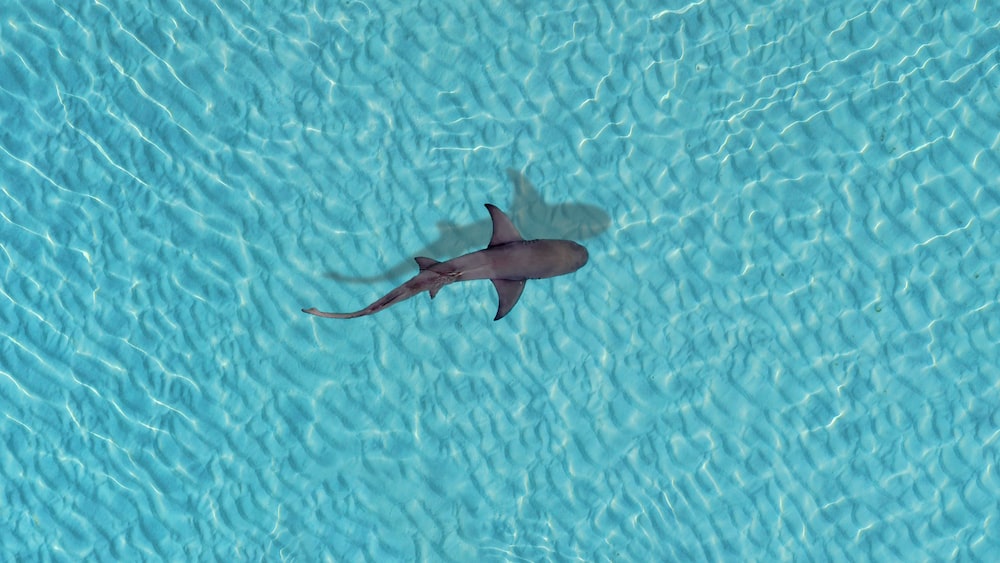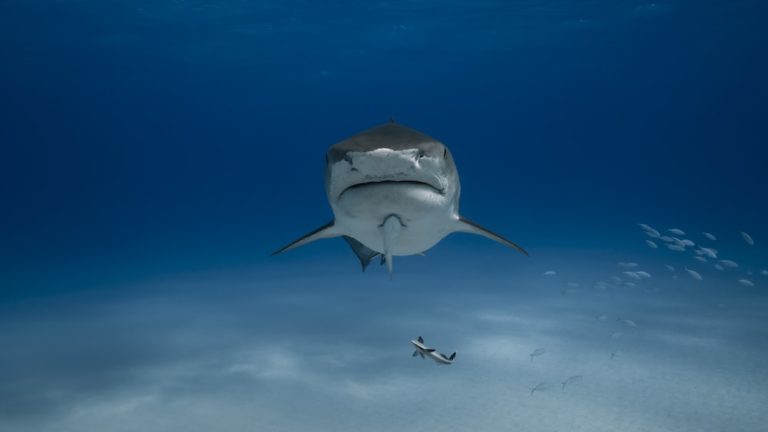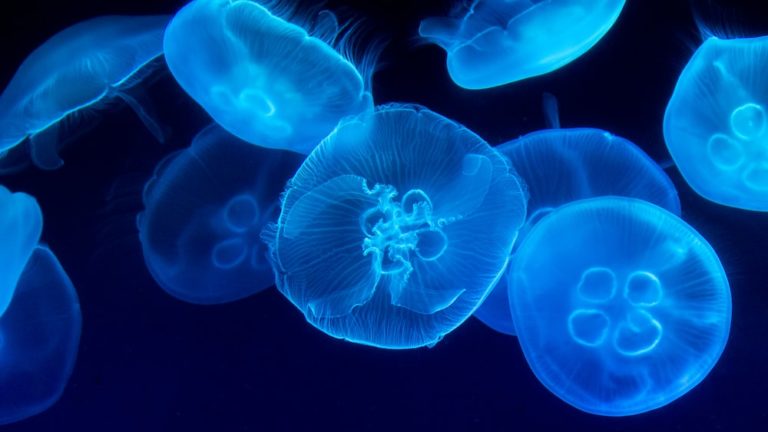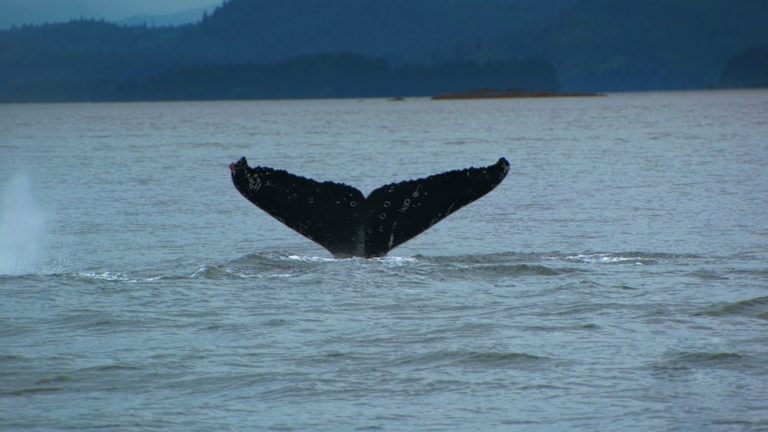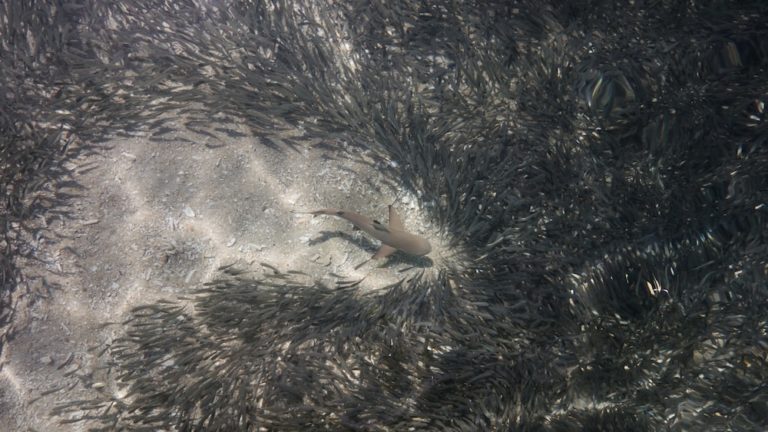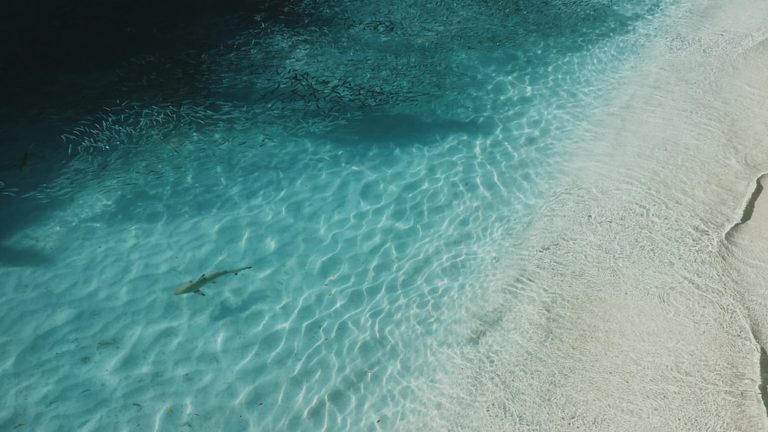Do Sharks Have Placenta: Unveiling The Mystery
Do Sharks Have Placenta: Unveiling The Mystery
Diving into the ocean’s depths, we encounter a world where the mysteries are as deep as the waters themselves. Marine enthusiasts and conservationists alike, prepare to embark on a voyage to unravel one such underwater enigma: do sharks have placenta? To the casual observer, sharks may seem as foreign and unfathomable as the ocean abyss, but today we’ll shed light on their reproductive nuances with a finesse befitting the most astute of aquanauts.
Key Points:
- Sharks have varied reproductive strategies, including viviparity and oviparity.
- Viviparous sharks give birth to live pups, some with a yolk-sac placenta.
- Some sharks, like the tiger shark, display unique placental-like connections.
- Shark embryos receive nutrients through yolk sacs, intrauterine dining, and adaptations for oxygen transportation.
- Genetic studies suggest that placental loss may offer evolutionary advantages for certain shark species.
- Around 30% of shark species lay eggs, while the rest give birth to live young.
Sharks, these formidable predators of the deep, are often misunderstood, and their reproductive strategies are as varied as the ecosystems they inhabit. From the majestic tiger shark to the more diminutive species, the mechanisms of shark pregnancy are a topic ripe for exploration. Join me as we sift through the sands of scientific fact to discover the truth about shark embryos and whether the term ‘placenta’ applies in their world.
As we dive deeper into this topic, we must keep an open mind, for the marine realm offers few straight answers. Understanding whether sharks truly have a placenta will take us on a journey through evolutionary wonder, exploring tales of reproduction that combine the alien with the familiar. So, take a deep breath, as we submerge into the quirky and fascinating depths of shark biology and reproduction.
Exploring Shark Reproduction
To understand the complex tapestry of life beneath the waves, one thread we must unfurl is shark reproduction. The process is as multifaceted as the creatures themselves, with strategies that vary wildly across species. An intricate dance of nature, shark reproduction spans the spectrum from laying eggs to birthing fully formed pups, exhibiting the marvels of evolutionary adaptation.
The Basics of Shark Reproduction
Before we can fathom whether sharks bear a placenta, it is imperative to grasp the rudiments of shark reproduction. Sharks engage in sexual reproduction, whereby males use claspers to transfer sperm to females. But unlike many animals, the saga of shark reproduction doesn’t follow a one-size-fits-all narrative. Sharks can be homeschoolers or adventurers depending on their reproductive mode: keeping their young safely ensconced within or sending eggs off into the great blue yonder.
The commencement of a new shark life can be as enigmatic as the deep sea itself. Some species rely on internal fertilization followed by the growth of embryos within the mother, while others opt for an external approach, laying eggs in carefully chosen nurseries. These initial steps in life’s journey dictate the course of growth for embryonic sharks, leading to intriguing questions about the existence and nature of a shark placenta.
Understanding shark reproduction is essential, as it involves various modes such as internal fertilization and external egg laying, which can influence the growth and development of embryonic sharks.
Viviparity and Oviparity in Sharks
Within the realm of shark reproduction, two primary modes feature prominently: viviparity and oviparity. To put it simply, shark species are either live-bearers or egg-layers.
- Viviparous sharks – These species give birth to live pups. This category can further be divided into those with a yolk-sac placenta and those without. The former offers a more direct nutrient transfer through the yolk-sac structure, while others adopt unique methods to sustain their embryos throughout development.
- Oviparous sharks – Conversely, oviparous species lay eggs into the marine environment. Encased within tough, leathery cases known as “mermaid’s purses,” these eggs rely on nutrients stored within until the pups are ready to hatch.
This dichotomy in reproductive strategies illustrates the shark’s ability to adapt and thrive in various marine habitats, leading us to ponder whether a placenta is a universal feature in viviparous sharks or a nuanced adaptation seen only in certain species.
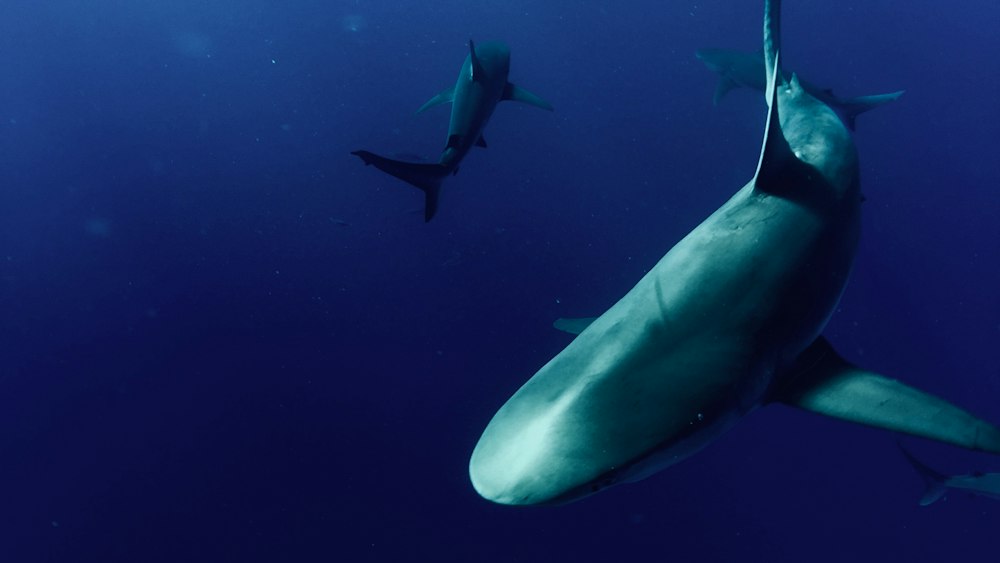
The Role of the Placenta in Marine Life
In the vast tapestry of marine life, the placenta plays a pivotal yet diverse role, ensuring the continuity of many ocean-dwelling species. Serving as a lifeline between mother and offspring, the placenta‘s function is a testament to the wonder of evolutionary biology. It begs the intriguing question central to today’s aquatic inquiry: do sharks have placenta, or do they employ alternative reproductive strategies?
What is a Placenta?
To demystify the concept, let’s navigate through the basics of what a placenta actually is. In mammals, the placenta is an organ that forms within the uterus during pregnancy, allowing for nutrient uptake, waste elimination, and gas exchange through the mother’s blood supply. It’s essentially a pop-up restaurant for the developing offspring, providing a multi-course meal of life-sustaining nutrients.
But is this the case for our finned friends? In the shark world, the term ‘placenta’ takes on a different hue. While not identical to the mammalian version, some sharks have evolved a comparable adaptation, a yolk-sac placenta, that offers a similar level of prenatal care. These are the waters where scientific terminology and nature’s creativity converge.
Placental Functions in Mammals vs. Sharks
In mammalian pregnancy, the placenta stands as the central processing unit for ensuring the growing fetus receives everything it needs during pregnancy. Picture an all-in-one facility providing oxygen, filtering out waste, and delivering nutrients. It establishes an intimate connection between mother and child, conveyed through the intricate network of tissues in the maternal uterus.
When it comes to sharks, though, the narrative weaves a different pattern. Not all viviparous sharks exhibit a mammal-like placenta. In these exceptional underwater residents, a structure connected to the yolk-sac plays a role resembling that of the placenta. The yolk-sac placenta in sharks is less like a fixed establishment and more akin to a pop-up venue that supports the embryos as they develop.
The placenta in mammalian pregnancy serves as the central processing unit for ensuring the growing fetus receives essential nutrients and support, establishing an intimate connection between mother and child.
Variations of Placental Structures in Sharks
Within the shark lineage, placental structures display an array of fascinating variations, an evolutionary kaleidoscope reflecting the adaptability of these ancient mariners. Some sharks employ a placental connection akin to mammals, while others have developed different, equally intriguing methods to nourish their young.
Yolk-Sac Placenta in Sharks
For those sharks that do indulge in a form of placental connection, the yolk-sac placenta is the modus operandi. During the initial stages of embryonic development, the yolk-sac, packed with nutrients, is the embryo’s primary source of sustenance. But as the pups grow and the yolky buffet diminishes, some shark species foster a unique development.
This yolk-sac placenta serves as a makeshift liaison between mother and offspring, evolving from the initial yolk-sac. This structure is adept at siphoning nutrients from maternal tissues, ensuring that the growing pups can continue their development in earnest. It’s as if these sharks have found an ingenious workaround to the absence of a true placenta, showcasing nature’s penchant for resourcefulness.
The Unique Case of the Tiger Shark
The case of the tiger shark fascinates for multiple reasons. Renowned for their imposing presence and wanderlust, these sharks also offer a captivating tale of reproduction. Tiger sharks are one of the few species to display a form of viviparity that includes a unique placental-like connection, blurring the lines between the familiar and the mystifying world of sharks.
In the early stages, a prudently conserved yolk-sac feeds the tiger shark embryos. But in nature’s marvel, as the yolk-sac depletes, it fuses with the tissues of the uterus to form a pseudo-placental structure that sustains the pups until birth. This improvisation enables a more efficient transfer of nutrients and showcases the adaptive ingenuity characteristic of the tiger shark lineage.
It’s not just the presence of a yolk-sac placenta that makes the tiger shark extraordinary. These sharks have a particular penchant for polyphagy – a trait that allows embryos to endearingly snack on smaller siblings or unfertilized eggs within the womb. This intrauterine dining, termed oophagy or adelphophagy, might seem a tad harsh, but it accentuates the hardcore survival mechanisms within the enigmatic ballet of life under the sea.
Oxygen Supply to Shark Embryos
To understand the full breadth of shark reproduction, we must consider the life-sustaining element of oxygen. For shark embryos developing without a traditional mammalian placenta, oxygen delivery presents a unique puzzle. How do these marine marvels ensure adequate respiration for their unborn pups? The answer lies within a symphony of evolutionary adaptations, allowing each shark species to breathe life into its young in ways that defy our terrestrial understanding.
How Shark Embryos Breathe Without a Placenta
Diving into the deep blue, one wonders how shark embryos sustain themselves without the typical mammalian umbilical lifeline. Shark embryos, depending on the species, have fascinating adaptations that allow them to breathe. For instance, those developed within egg cases, often known as egg capsules, extract oxygen directly from seawater. This feat is achieved through specialized structures similar to gills, namely lamellae, which act as respiratory surfaces.
The process is akin to a mini self-contained dive where the embryo inside an egg capsule envelops surrounding water, enabling gas exchange through capillary-rich walls. In species where young develop inside the mother, the embryos may respire by filtering oxygen from the mother’s blood, indirectly not utilizing a traditional placenta but still managing to flourish. This daring feat of survival is just crackerjack in the workings of marine life!
Adaptations for Oxygen Transportation
As marine biologists, we get particularly thrilled discussing the clever tricks up a shark’s fins. Enhanced blood circulation with high levels of hemoglobin and hematocrit helps shark embryos in nutrient-rich uterine environments. This ensures a robust supply of oxygen, resembling a free-flowing current of vitality. Additionally, in some viviparous shark species, embryos develop protrusions on their gills, further assisting in the absorption of oxygen and nutrients directly from the uterine wall.
In vividly describing these adaptations, imagine millions of tiny fingers extending from the surface of the embryo, greedily soaking up life-giving oxygen – the ocean’s version of a busy marketplace where every breath is a transaction. Within the great white shark uterus, these specialized structures are in full swing, ensuring the burgeoning fetuses receive all they need to grow into the ocean’s formidable predators.
Shark embryos have remarkable adaptations for enhanced blood circulation and nutrient absorption in the uterine environment, ensuring a robust supply of oxygen and nutrients for their development.
Evolutionary Perspectives on Shark Placentation
The evolution of sharks has been a riveting tale of adaptability and survival, painting a picture of the ocean’s vast surface rippling with the shadows of these enigmatic creatures. The development or loss of placentation in sharks is thought to be a magnificent dance of evolutionary pressures, displaying a spectrum of reproductive strategies aimed at offspring survival.
The Evolution of Reproductive Strategies in Sharks
For the fervent admirers of marine tapestries, the evolutionary canvas of shark reproduction is endlessly intricate. In the mesmerizing underwater ballet, sharks demonstrate a spectrum from oviparity – laying eggs outside the body – to viviparity, where young are born live. Among viviparous sharks, some possess a yolk-sac placenta that connects the developing embryo to the uterine lining, facilitating the maternal transfer of nutrients.
Charting through the eons, sharks have finessed their reproductive strategies finely tuned to environmental challenges. The great white sharks, our ocean’s iconic sentinels, for example, showcase a yolk-sac placenta, aligning their young with the resources needed to thrive from the moment they’re brought into the marine fold. The existence of a yolk-sac placenta allows some shark species to nourish their young akin to a botanical vine transferring life essence to ripening grapes, ensuring the fledgling predators are birthed with a morsel of their formidable legacy.
Insights from Genetic Studies on Placental Loss
As the tide of scientific exploration surges forward, genetic studies shed light on the enigma surrounding placentation in sharks. These advancements unravel tangled mysteries, uncovering that the loss of a traditional placenta may offer certain shark species, like the arresting white shark embryos, evolutionary advantages. Genetic predispositions have nudicated how placental structures vary vastly even amongst closely related species, suggesting a smorgasbord of reproductive complexities rather than a fixed feast.
By peering into the genetic blueprint of sharks, we dare to decode histories of adaptation, where nature’s blueprint forgoes the placenta in favor of alternative, perhaps more ancient, pathways. These genetic revelations offer a spiraling staircase deep into the past, where each step uncovers a layer of insight into how sharks rose to their current glory.
FAQs
1. Do all sharks give birth to live young?
Not all sharks give birth to live young; some species lay eggs. In fact, around 30% of shark species, including horn sharks and catsharks, encapsulate their offspring within egg capsules that are subsequently released into the ocean, where embryos continue to develop until hatching. The remaining shark species embrace viviparity, delighting in the marvel of bearing live young.
2. How do shark embryos receive nutrients if not through a placenta?
Shark embryos receive nutrients in a few different ways when not through a placenta. Some rely on rich yolk stored within the egg capsule for nourishment, while viviparous sharks might absorb sustenance through a yolk sac or by consuming unfertilized eggs or their siblings – nature’s own dramatic twist on survival.
3. Are there any sharks with a true placenta similar to mammals?
Sharks, fascinating creatures though they are, do not possess a true placenta like mammals. However, some species exhibit a form of a yolk-sac placenta, which provides a comparable albeit not identical function, allowing nutrient transfer from mother to embryo during development.
4. What are the implications of placental loss in sharks’ evolutionary history?
The implications of placental loss in sharks’ evolutionary history reveal the ocean’s intricate tale of adaptation. Such placental variations suggest sharks have adopted diverse reproductive methods to enhance the survival of their young in the vast and competitive marine environment.
Conclusion
In grappling with the question, do sharks have placenta, we traverse the oceanic depths to uncover the fecund mysteries enshrined within shark reproduction. Through this exploration, we’ve unearthed the womb-like sanctuaries sharks have evolved, ensuring their progeny’s robust start in the great blue wilderness. Whether shrouded within an egg capsule or nestled in the nutrient-dense haven of a great white shark uterus, shark embryos are the bearers of an ancient legacy – a lineage refined by the relentless currents of evolution.
Together, we’ve navigated the rivulets and swells of this question, each discovery a buoy we’ve clung to in hopes of understanding these enigmatic predators better. We’ve seen how the absence of a traditional placenta doesn’t hinder these impressive creatures; instead, it’s a testament to their enduring resilience. Now, as the currents of our inquiry ebb, we must ponder how our own tie to the ocean influences its inhabitants. Let this knowledge ripple not just through our minds but our actions, as we strive to shield the marine denizens we so admire.
May you continue to reflect on the splendid marvels of the briny depths and the wonders they hold, and together, let’s gently navigate our way towards a future where both humans and sharks thrive in harmony. Wishing you fair winds and following seas on your continual voyage of discovery – this is Jasper Flynn, until next time.

